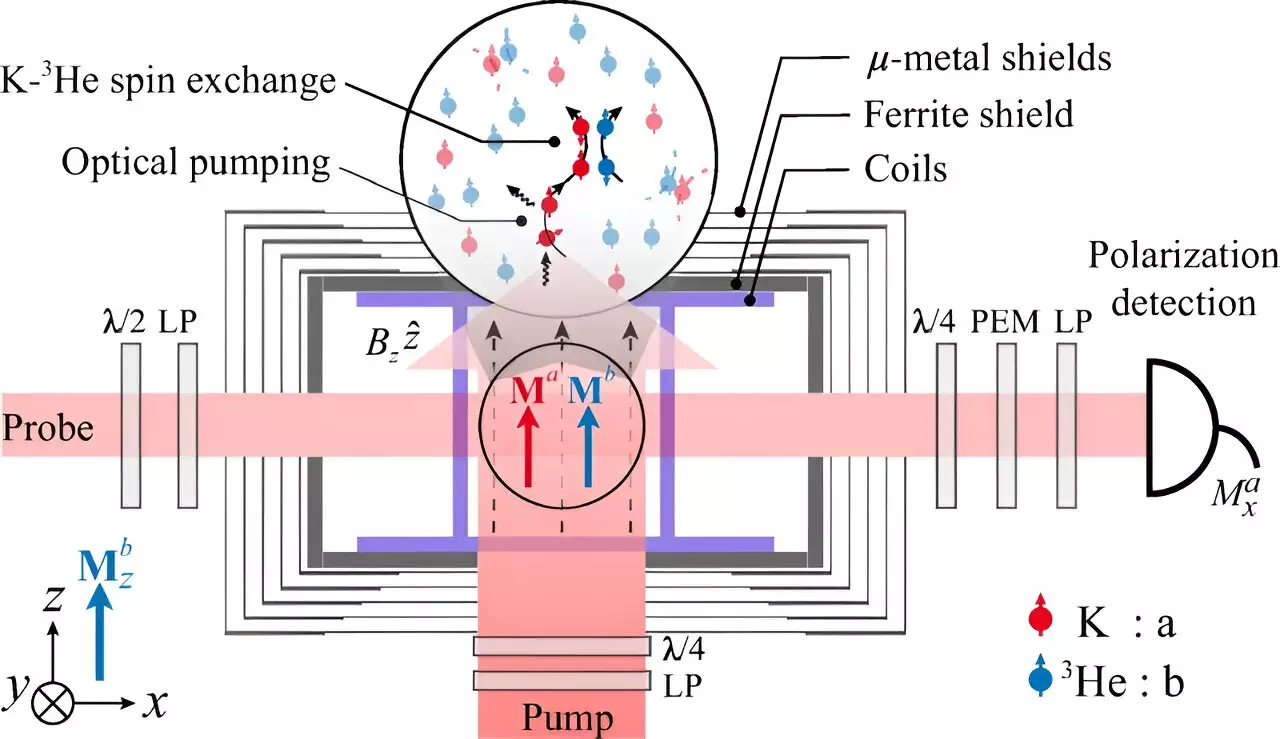Recent advancements in the realm of atomic physics have shed light on the innovative application of Fano resonance interference, especially in the context of mixed atomic spins. A research team led by Professors Peng Xinhua and Jiang Min from the University of Science and Technology of China (USTC) has unveiled a groundbreaking technique aimed at significantly suppressing magnetic noise interference. Published in the esteemed journal Physical Review Letters, the implications of this study extend far beyond mere experimental minutiae—they hold the potential to optimize precision measurements crucial in various scientific inquiries, including dark matter searches and understanding fundamental interactions.
In precision measurement experiments, especially those probing exotic spin interactions, researchers often grapple with the effects of magnetic noise. These interactions, which lie beyond the conventional framework of particle physics, are fundamental for exploring uncharted territories, including the enigmatic realm of spin-dark matter. The measurement of extraordinarily weak magnetic fields is critical here; however, traditional methodologies have been invariably hampered by noise interference. This background noise complicates the extraction of meaningful data, necessitating innovative solutions to enhance measurement sensitivity.
Prior efforts in the domain of atomic co-magnetometers aimed to address some of these challenges by utilizing two different atomic spins to counteract the drift and variations in magnetic fields. Nonetheless, the efficacy of these systems has largely been constrained to low-frequency magnetic noise, specifically those under 1 Hz. Such limitations stifle the quest to delve deeper into exotic spin phenomena that may illuminate new physics.
Recognizing the pressing need for enhanced measurement techniques, the research team devised an ingenious method of magnetic noise suppression through self-compensation effects. This methodology was empirically validated through experiments involving a mixed system of potassium (K) and helium-3 (³He) gases. In this setup, K, which was polarized by lasers, played a crucial role in facilitating the polarization and detection of nuclear spins in ³He via spin-exchange collisions.
A notable aspect of their approach involved manipulating the bias magnetic fields—setting them equivalently in magnitude but oppositely in direction. This arrangement enabled the nuclear spins of ³He to adiabatically follow external low-frequency magnetic noise. The significant breakthrough came when the researchers demonstrated that by varying both the magnitude of the bias field and the angle of detection relative to specific frequency magnetic noise, they achieved effective suppression of higher frequency noise. This nuanced control opens doors to previously inaccessible measurements.
Theoretical Foundations: Fabry-Perot Resonance
An intriguing theoretical framework underpins their experimental findings, namely the Fabry-Perot resonance interference cancellation. By applying this established phenomenon in a novel context, the researchers offered comprehensive insights into how magnetic noise can be effectively managed and manipulated. Their experiments illustrated that this self-compensation technique not only combats low-frequency noise but extends its suppression capabilities to frequencies as high as 200 Hz, with suppression factors exceeding two orders of magnitude.
The broader implications of this work extend into numerous fields, particularly in the pursuit of dark matter detection and the exploration of exotic spin interactions in fundamental physics. Not only does this research spotlight the potential for enhanced sensitivity in magnetic detection—boasting levels of 0.1 fT/Hz^(1/2)—but it also sets the stage for future innovations in the way we measure and interpret weak magnetic fields.
This research encapsulates a vital leap in understanding and managing magnetic noise, paving the way for more refined experimental setups. As scientists delve deeper into the mysteries of the universe, groundbreaking techniques such as those unveiled by this team at USTC will undoubtably play pivotal roles in unlocking the secrets of dark matter and beyond, reinforcing the essential nature of continuous innovation in scientific research.
The exploration of Fano resonance interference in mixed atomic spins has not only provided a tantalizing glimpse into the potential of precise measurement techniques but also has underscored the necessity of addressing magnetic noise in experimental physics. With continued efforts and innovations in this arena, researchers are poised to make dramatic strides in our understanding of the fundamental constituents of the universe.

